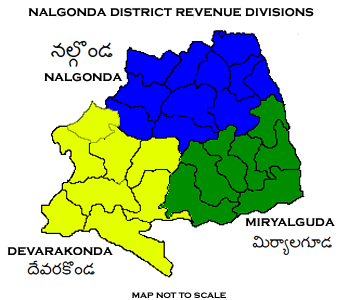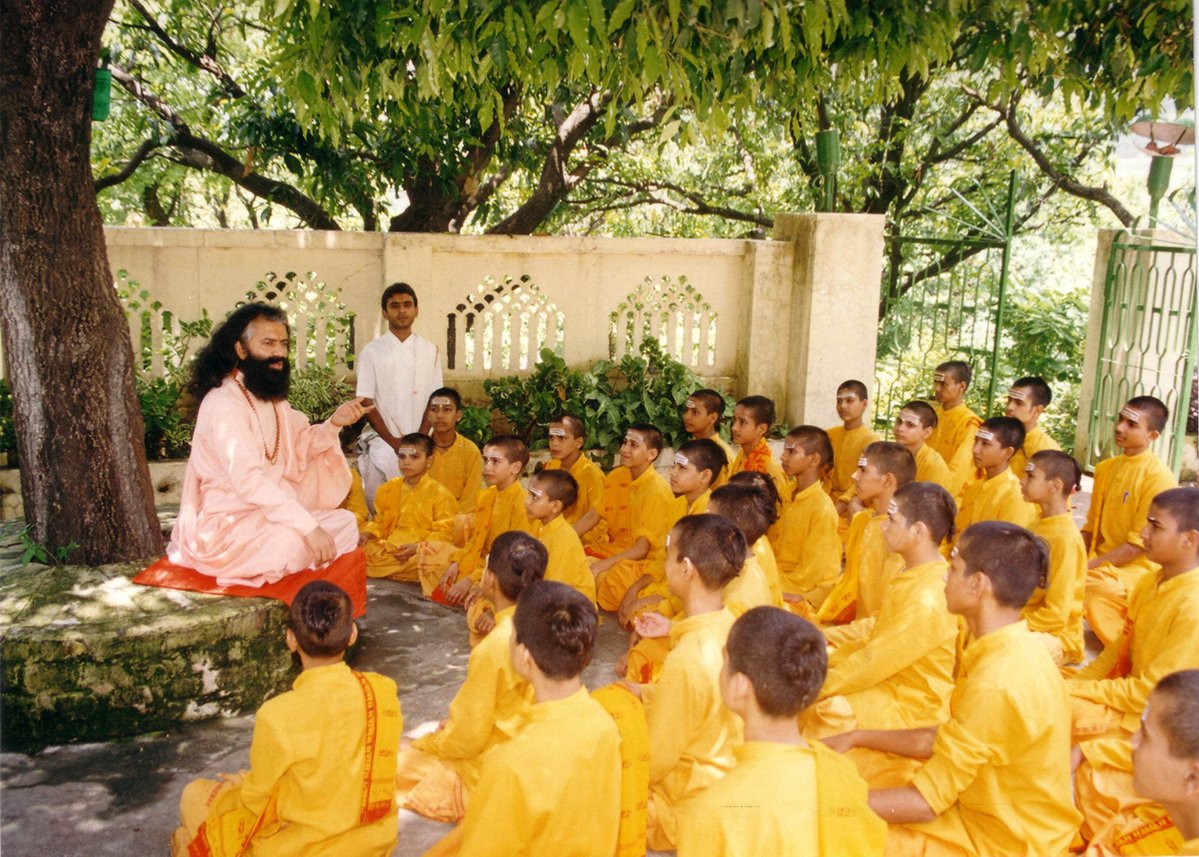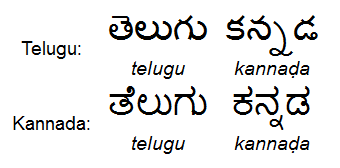|
Arikesari I
Arikesari I (r. c. 775–800 CE) was an Indian ruler from the Vemulavada Chalukya dynasty. He was a vassal of the Rashtrakuta king Dhruva Dharavarsha and appears to have helped his overlord subjugate the Vengi Chalukya ruler Vishnuvardhana IV. Reign Arikesari was a son of his predecessor Vinayaditya; he had a brother named Biragriha. The records of Arikesari's successors state that he conquered the kingdoms of Vengi and Trikalinga during the reign of his overlord Nirupama-deva, who can be identified as the Rashtrakuta king Dhruva Dharavarsha. Dhruva had ascended the throne after a war of succession against his brother Govinda II, who had been supported by the Vengi Chalukya king Vishnuvardhana IV. It appears that after consolidating his power, Dhruva sent an army led by Arikesari to chastise Vishnuvardhana, whose territories included Vengi and Trikalinga. Vishnuvardhana later negotiated peace, and married his daughter Shila-mahadevi to Dhruva. It was probably Arikesari, who ... [...More Info...] [...Related Items...] OR: [Wikipedia] [Google] [Baidu] |
Chalukyas Of Vemulavada
The Chalukyas of Vemulavada were an Indian dynasty that ruled in and around the present-day Telangana between 7th and 10th centuries. Their capital was located at Vemulavada, and they were vassals of the Rashtrakutas. History The 966 CE Parabhani copper-plate inscription of king Arikesari III of Vemulavada claims that his dynasty descended from the Chalukyas of solar dynasty. Not much is known about the early rulers of the dynasty. The Kollapur copper-plate inscription attributes several military victories to Vinayaditya alias Yuddhamalla I (not to be confused with the Badami Chalukya king Vinayaditya, also titled Yuddhamalla). These victories amount to the subjugation of almost the entire Indian subcontinent, and therefore, appear to be gross exaggerations. It is possible that Vinayaditya was a feudatory of a powerful king, and participated in this king's military campaigns. This king could have been the Rashtrakuta ruler Dantidurga, who was a contemporary of Vi ... [...More Info...] [...Related Items...] OR: [Wikipedia] [Google] [Baidu] |
Kali Yuga
''Kali Yuga'', in Hinduism, is the fourth and worst of the four ''yugas'' (world ages) in a ''Yuga Cycle'', preceded by '' Dvapara Yuga'' and followed by the next cycle's '' Krita (Satya) Yuga''. It is believed to be the present age, which is full of conflict and sin. The "Kali" of ''Kali Yuga'' means "strife", "discord", "quarrel", or "contention" and ''Kali Yuga'' is associated with the demon Kali (not to be confused with the goddess Kālī). According to Puranic sources, Krishna's death marked the end of '' Dvapara Yuga'' and the start of ''Kali Yuga'', which is dated to 17/18 February 3102 BCE. Lasting for 432,000 years (1,200 divine years), ''Kali Yuga'' began years ago and has years left as of CE. ''Kali Yuga'' will end in the year 428,899 CE. Etymology ''Yuga'' ( sa, युग), in this context, means "an age of the world", where its archaic spelling is ''yug'', with other forms of ''yugam'', , and ''yuge'', derived from ''yuj'' ( sa, युज्, ... [...More Info...] [...Related Items...] OR: [Wikipedia] [Google] [Baidu] |
Nalgonda District
Nalgonda district is a district in the Telangana state of India. Nalgonda district has the highest number of mandals in the state with 31 mandals. The district shares boundaries with Suryapet, Rangareddy, Yadadri and Nagarkurnool districts and with the state boundary of Andhra Pradesh. Etymology Nalgonda is derived from two Telugu words Nalla (Black) & Konda (Hills) i.e. ''Black Hills''. History Nalgonda was earlier referred to as Neelagiri, the name given by some local rulers and the name was changed to ''Nallagonda'' only after its conquest by Allauddin Bahaman Shah, the founder of Bahmani Sultanate . The district had a major role in the Telangana Rebellion. Geography The district is spread over an area of . Demographics Census of India, the district has a population of 1,618,416. According to the 2011 census, 81.75% of the population spoke Telugu, 11.91% Lambadi and 5.51% Urdu as their first language. The Krishna River, Musi River, Aleru, Peddav ... [...More Info...] [...Related Items...] OR: [Wikipedia] [Google] [Baidu] |
Kalamukha
The Kalamukha were a medieval Shaivite sect of the Deccan Plateau who were among the first professional monks of India. Their earliest monasteries were built in Mysore. Origin and etymology Information regarding the Kalamukha sect takes the form of inscriptions relating to temple grants and texts usually written by their opponents. They appear to have been an offshoot of the Pashupata sect, about whom more is known. Their name was derived from ' which has multiple meanings namely, 'facing the time' or 'facing the death' or 'black-face'. Their rituals using "yantras" were more of time based so, we can safely assume the meaning would be one of the first two rather than last one. Evidence from the ''Puranas'' and similar ancient texts makes it clear that they were also known by other names, such as ''Laguda'', ''Lakula'' and ''Nakula'', and associated with other words meaning ''black-faced'', such as ''Kalanana''. The rise of the Kalamukhas to a position of influence coincided w ... [...More Info...] [...Related Items...] OR: [Wikipedia] [Google] [Baidu] |
Gurukula
A or ( sa, गुरुकुल, gurukul) is a type of education system in ancient India with ('students' or 'disciples') living near or with the guru, in the same house. The guru-shishya tradition is a sacred one in Hinduism and possibly appears in other dharmas in India, such as Jainism and Buddhism. (In the Sikhism, Sikh tradition by contrast, the word Guru Granth Sahib, Guru has a very restricted use and not generally applied to individual teachers, while the institution of Gurdwara has a major social role instead of a monastic one.) The word is a combination of the Sanskrit words ('teacher' or 'master') and ('family' or 'home'). The term is also used today to refer to residential monasteries or schools operated by modern gurus. The proper plural of the term is , though ''gurukuls'' is also used in English and some other Western world, Western languages. The students learn from the guru and help the guru in his everyday life, including carrying out of mundane daily ho ... [...More Info...] [...Related Items...] OR: [Wikipedia] [Google] [Baidu] |
Lunar Dynasty
The Lunar dynasty (IAST: Candravaṃśa) is a legendary principal house of the Kshatriyas varna, or warrior–ruling caste mentioned in the ancient Indian texts. This legendary dynasty was said to be descended from moon-related deities (''Soma'' or ''Lunar''). The Hindu deity Krishna is believed to have been born in the Yaduvamsha branch of the Lunar dynasty. According to the ''Shatapatha Brahmana'', Pururavas was the son of Budha (himself often described as the son of Soma) and the gender-switching deity Ila (born as the daughter of Manu). Pururavas's great-grandson was Yayati, who had five sons named Yadu, Turvasu, Druhyu, Anu, and Puru. These seem to be the names of five Vedic tribes as described in the Vedas. According to the ''Mahabharata'', the dynasty's progenitor Ila ruled from Prayaga, and had a son Shashabindu who ruled in the country of Bahli. The son of Ila and Budha was Pururavas who became the first Chandravamsha emperor of the entirety of the earth. Ila's ... [...More Info...] [...Related Items...] OR: [Wikipedia] [Google] [Baidu] |
Sanskrit Prosody
Sanskrit prosody or Chandas refers to one of the six Vedangas, or limbs of Vedic studies.James Lochtefeld (2002), "Chandas" in The Illustrated Encyclopedia of Hinduism, Vol. 1: A-M, Rosen Publishing, , page 140 It is the study of poetic metres and verse in Sanskrit. This field of study was central to the composition of the Vedas, the scriptural canons of Hinduism, so central that some later Hindu and Buddhist texts refer to the Vedas as ''Chandas''. The Chandas, as developed by the Vedic schools, were organized around seven major metres, and each had its own rhythm, movements and aesthetics. Sanskrit metres include those based on a fixed number of syllables per verse, and those based on fixed number of morae per verse. Extant ancient manuals on Chandas include Pingala's ''Chandah Sutra'', while an example of a medieval Sanskrit prosody manual is Kedara Bhatta's ''Vrittaratnakara''. The most exhaustive compilations of Sanskrit prosody describe over 600 metres. This is a subst ... [...More Info...] [...Related Items...] OR: [Wikipedia] [Google] [Baidu] |
Telugu-Kannada Script
The Kannada–Telugu script (or Telugu–kannada script) was a writing system used in Southern India. Despite some differences, the scripts used for the Kannada and Telugu languages remain quite similar and highly mutually intelligible. History The Dravidian family comprises about 73 languages including Tamil, Kannada, Telugu and Malayalam. Satavahanas introduced the Brahmi to present-day Telugu and Kannada speaking regions. Bhattiprolu script introduced by the Satavahanas gave rise to the Kadamba script. During the 5th to 7th centuries the early Bādāmi Chālukyās and Early Banavasi Kadambās used an early form of the Kannada script in inscriptions, called the Kadamba script. The Kadamba script evolved into the Kannada script. When Chalukya empire extended towards Telugu speaking regions they establihed another branch in Vengi, namely the Eastern Chalukyas or the Chalukyas of Vengi who later introduced Kannada script to Telugu language which devloped Kannada-Telugu script ... [...More Info...] [...Related Items...] OR: [Wikipedia] [Google] [Baidu] |
Sanskrit
Sanskrit (; attributively , ; nominally , , ) is a classical language belonging to the Indo-Aryan branch of the Indo-European languages. It arose in South Asia after its predecessor languages had diffused there from the northwest in the late Bronze Age. Sanskrit is the sacred language of Hinduism, the language of classical Hindu philosophy, and of historical texts of Buddhism and Jainism. It was a link language in ancient and medieval South Asia, and upon transmission of Hindu and Buddhist culture to Southeast Asia, East Asia and Central Asia in the early medieval era, it became a language of religion and high culture, and of the political elites in some of these regions. As a result, Sanskrit had a lasting impact on the languages of South Asia, Southeast Asia and East Asia, especially in their formal and learned vocabularies. Sanskrit generally connotes several Old Indo-Aryan language varieties. The most archaic of these is the Vedic Sanskrit found in the Rig Veda, a colle ... [...More Info...] [...Related Items...] OR: [Wikipedia] [Google] [Baidu] |
Kollipara
Kollipara is a village in Guntur district of the Indian state of Andhra Pradesh. It is the headquarters of Kollipara mandal in Tenali revenue division. And it was one of the capital for Pericchedi. Geography Kollipara is situated at . It is spread over an area of . Kollipara is located at a distance of 21km from Tenali. The Nearest city to Kollipara is Tenali. Governance Kollipara gram panchayat is the local government of the village. It is divided into wards and each ward is represented by a ward member. The village forms a part of Andhra Pradesh Capital Region and is under the jurisdiction of APCRDA. Economy and transportation The major occupation of the village is agriculture, which includes cultivation of paddy. APSRTC operates buses from Tenali, Guntur, Vijayawada and BHEL Township, Hyderabad to Kollipara. The nearest railway stations include Kolakaluru halt and Tenali Junction railway station. Education As per the school information report for the academi ... [...More Info...] [...Related Items...] OR: [Wikipedia] [Google] [Baidu] |
Rashtrakuta
Rashtrakuta (IAST: ') (r. 753-982 CE) was a royal Indian dynasty ruling large parts of the Indian subcontinent between the sixth and 10th centuries. The earliest known Rashtrakuta inscription is a 7th-century copper plate grant detailing their rule from manapur a city in Central or West India. Other ruling Rashtrakuta clans from the same period mentioned in inscriptions were the kings of Achalapur and the rulers of Kannauj. Several controversies exist regarding the origin of these early Rashtrakutas, their native homeland and their language. The Elichpur clan was a feudatory of the Badami Chalukyas, and during the rule of Dantidurga, it overthrew Chalukya Kirtivarman II and went on to build an empire with the Gulbarga region in modern Karnataka as its base. This clan came to be known as the Rashtrakutas of Manyakheta, rising to power in South India in 753 AD. At the same time the Pala dynasty of Bengal and the Prathihara dynasty of Malwa were gaining force in eastern and ... [...More Info...] [...Related Items...] OR: [Wikipedia] [Google] [Baidu] |
Bodhan
Bodhan town in Nizamabad district of the Indian state Telangana. Bodhan is primarily known for the Nizam Sugar Factory founded by a Nizam of Hyderabad, and some historical places such as The Chakreshwara Shiva Temple, The Renuka Temple, Bheemuni Gutta at Rakasipet and prominent other historical places, such as the Pandu Teertha (Pandu Lake dug by the Pandavas), Chakra Teertha (Chakki lake) and many other temples and shrines. History Bodhan is identified as the ancient Podana town (Podanapura), which was known to be the capital of Asmaka Mahajanapada of ancient India that covered present-day Andhra Pradesh, Telangana, and Maharashtra. It probably was also served as the capital of Vinayaditya, an 8th century ruler of the Vemulavada Chalukya dynasty. Rakasipet is a part of the Bodhan town which has historical significance. It is considered that "Pandavas" while doing " Aranyavas" stayed near Bodhan. Bhima killed "Bakasura" near Rakasipet (Bodhan).That place is called Bhimu ... [...More Info...] [...Related Items...] OR: [Wikipedia] [Google] [Baidu] |



.png)


